Showing 57–61 of 61 Products [Q A E ]
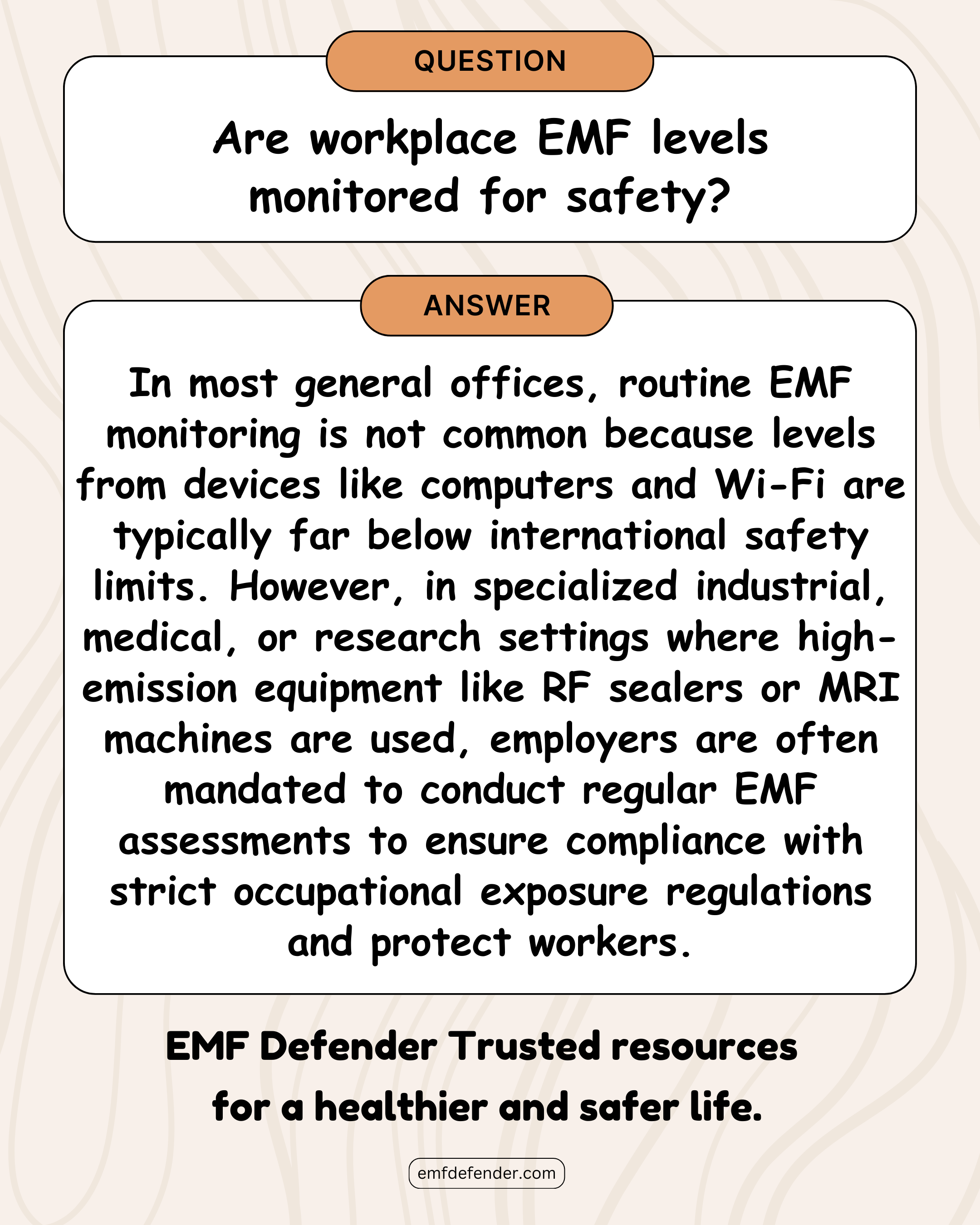
Are workplace EMF levels monitored for safety?
Yes. In most offices, routine EMF monitoring is not required since exposure from Wi-Fi, computers, and office electronics is typically well below international safety limits. However, in specialized environments such as factories, hospitals, or research facilities where high-emission equipment like RF sealers, MRI machines, or industrial transmitters are used, employers are required to perform regular EMF safety checks. These assessments ensure compliance with occupational exposure regulations and help protect workers from potential risks in higher-exposure workplaces.
Additional Information:
..
Additional Information:
..
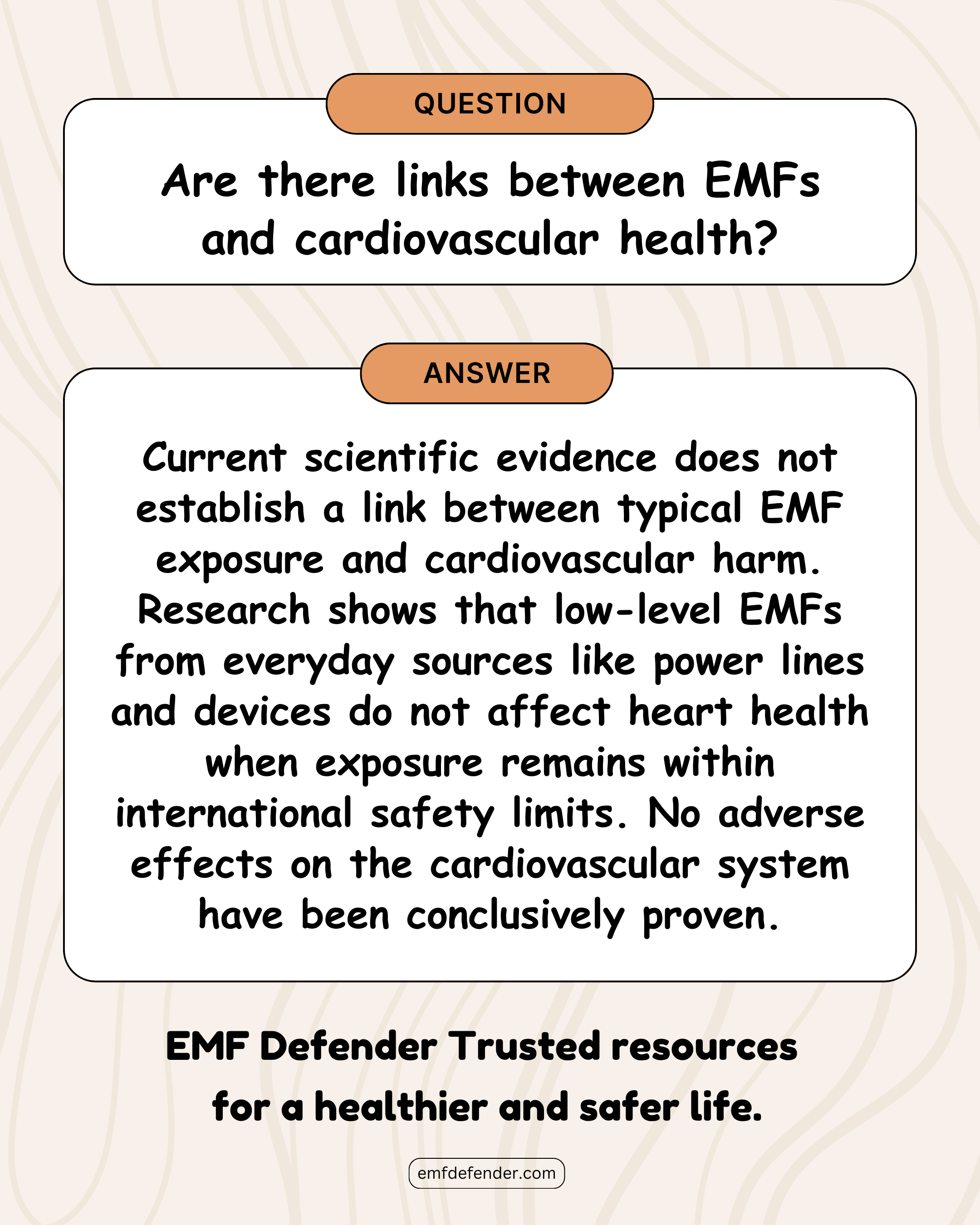
Are there links between EMFs and cardiovascular health?
No. Current research does not establish a proven link between everyday EMF exposure and cardiovascular harm. Studies indicate that low-level EMFs from sources like power lines, Wi-Fi, or household devices do not negatively affect heart function when exposure remains within recognized safety guidelines. International health agencies confirm that no conclusive evidence exists showing EMFs at typical environmental levels cause cardiovascular disease or other heart-related problems. Continued monitoring and research are ongoing, but scientific consensus supports the safety of EMFs within current limits.
Additional Information:
..
Additional Information:
..
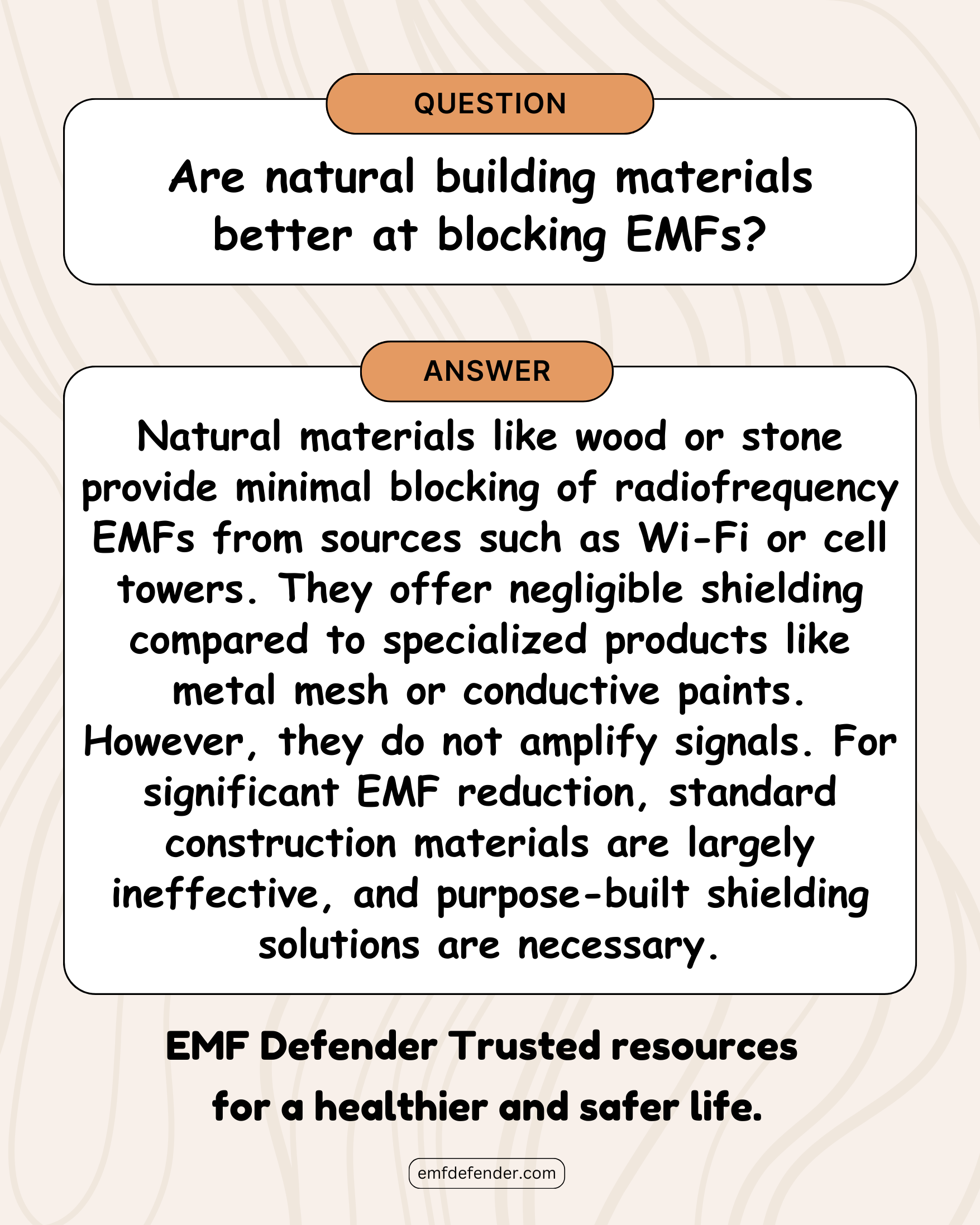
Are natural building materials better at blocking EMFs?
No. Natural building materials such as wood, brick, or stone provide only limited resistance to radiofrequency EMFs from Wi-Fi, mobile towers, and household electronics. While they may slightly weaken signals, they do not block them effectively. Specialized shielding materials like conductive paints, metal meshes, or purpose-built fabrics are required for significant EMF reduction. Standard construction materials alone are largely ineffective as protection, meaning intentional shielding solutions are the best option for reducing long-term exposure indoors.
Additional Information:
..
Additional Information:
..
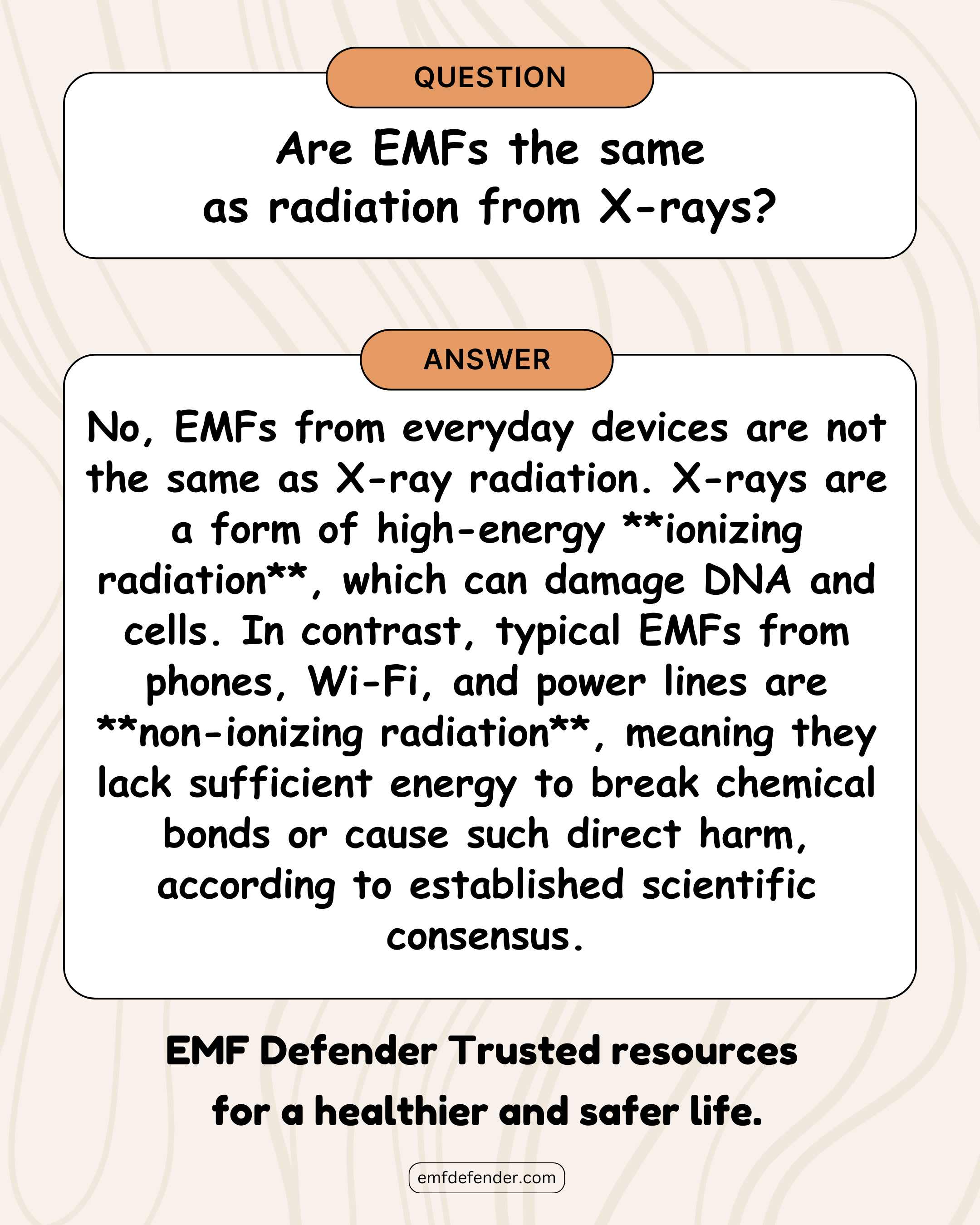
Are EMFs the same as radiation from X-rays?
No. Everyday EMFs from devices like phones, Wi-Fi, and power lines are not the same as X-rays. X-rays belong to ionizing radiation, which carries very high energy capable of damaging DNA and cells. By contrast, EMFs from daily technology are non-ionizing radiation, meaning they do not have enough energy to break chemical bonds or directly harm cells. Scientific consensus confirms that while EMFs can affect the body in other ways, they are not equivalent to the dangerous effects of X-ray radiation.
Additional Information:
..
Additional Information:
..
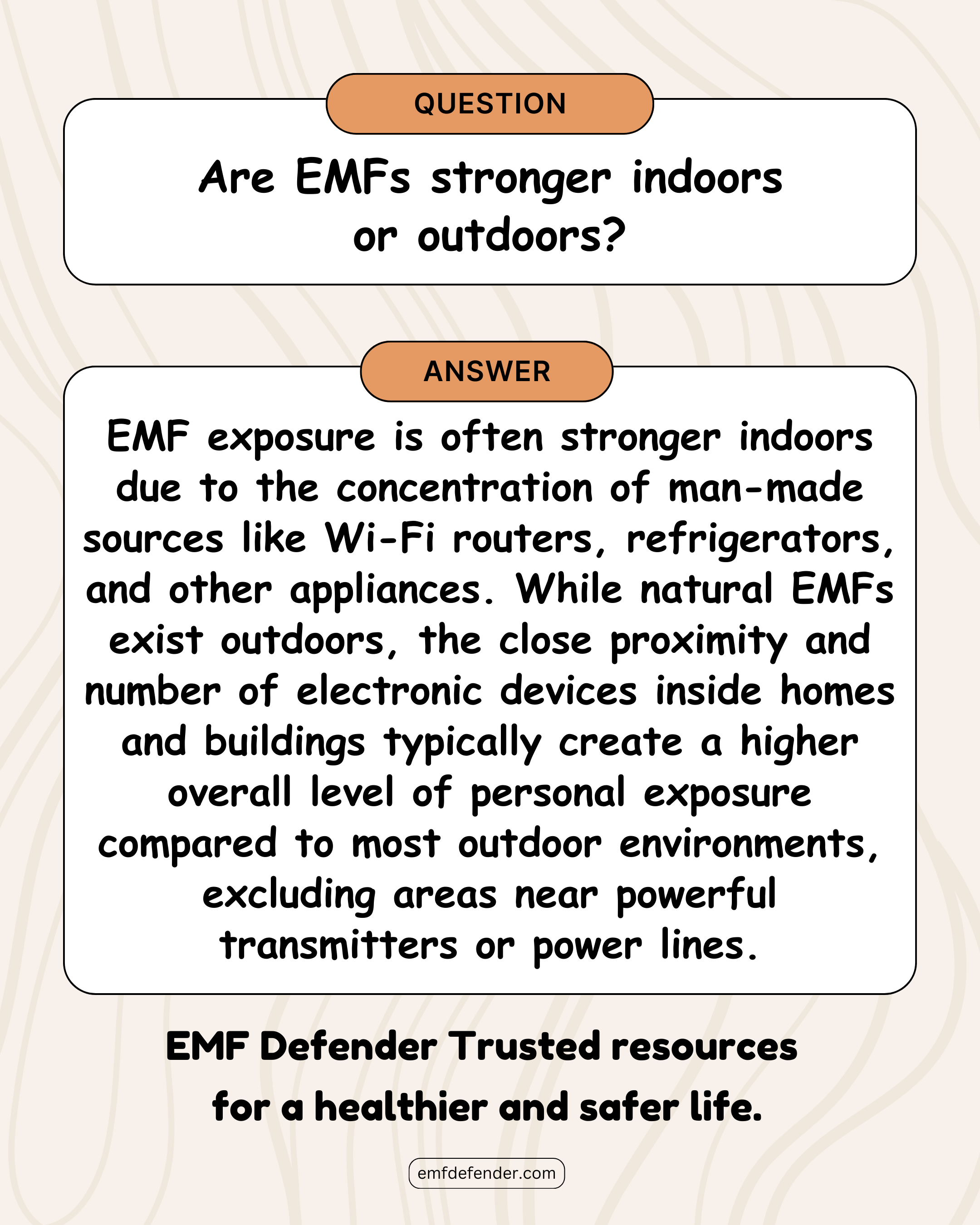
Are EMFs stronger indoors or outdoors?
Yes. EMF exposure is usually stronger indoors because of the many man-made sources concentrated inside homes and workplaces. Wi-Fi routers, refrigerators, televisions, microwaves, and other devices continuously emit EMFs. Outdoors, natural EMFs exist, but unless you are close to powerful transmitters, cell towers, or power lines, exposure is often lower. The limited ventilation indoors and close proximity to devices can significantly increase overall personal exposure compared to most outdoor environments.
Additional Information:
..
Additional Information:
..
- « Previous
- 1
- ...
- 6
- 7
- 8
- Next »